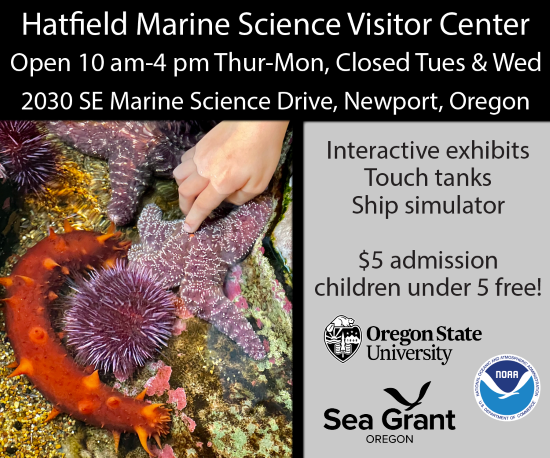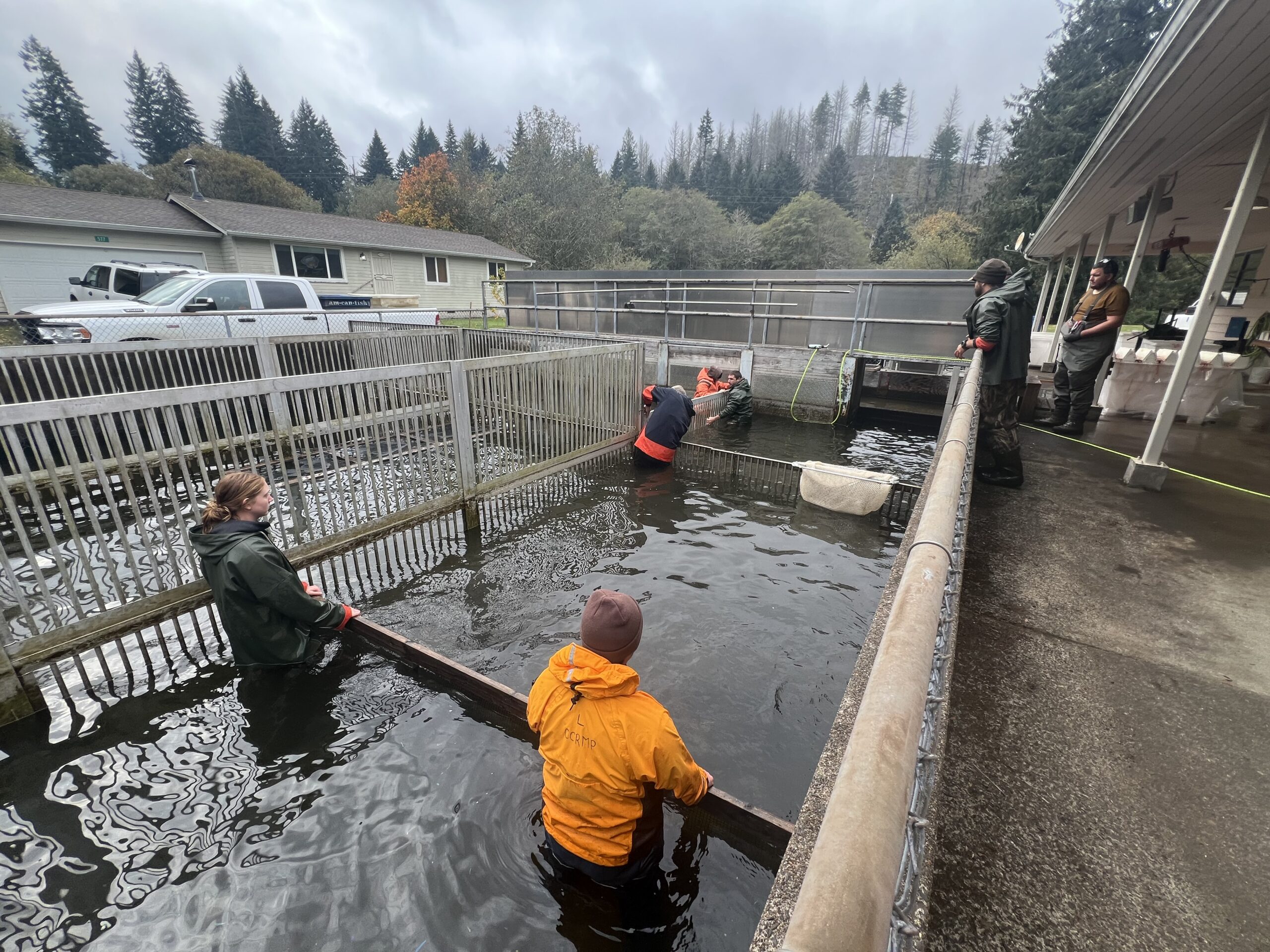
By QUINTON SMITH/Lincoln Chronicle
OTIS – There is little time for reflection when you’re busy wrestling with thousands of fall Chinook salmon returning to the Salmon River Hatchery.
For the past month, salmon – some weighing more than 30 pounds – thrashed in watery pens before sorted as wild or hatchery fish and then either released back into the Salmon River or killed for their eggs or sperm, for food banks and stream enhancement.
It’s a regular fall ritual at the Salmon River Hatchery that helps create the next generation of Oregon’s iconic fish.
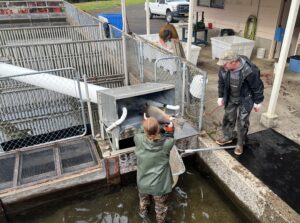
“That’s a dinosaur,” calls out Ryan Fenwick as a fellow Oregon Department of Fish & Wildlife struggles to lift a massive wild male Chinook into a long pipe that will carry it back to the river below.
The annual harvest – and some release — of Chinook and coho salmon wrapped up last week for the hatchery, which on Friday will close after 50 years.
The ODFW is shutting the Otis hatchery – one of 30 it owns or operates — because it had to cut its 2025-26 budget. The hatchery is the state’s most inefficient to operate and has struggled with rising Salmon River water temperatures that exacerbates fish-killing diseases.
But salmon don’t know that humans are closing their place of origin. So for the next five or six years ODFW employees will return to the property each October to repeat the harvest cycle.
Interim manager Clayton Wood is the only ODFW employee left at the Salmon River Hatchery. So last Wednesday, one volunteer and eight agency employees from across the state came to help him finish rounding up and processing salmon. On Friday they moved the last of thousands of rainbow trout from the rearing ponds in Otis to the ODFW hatchery in Alsea.
This Friday, Wood will gather the last of his belongings from the state-owned house where he lived the past nine years and join his wife and two young children already at their new home at ODFW’s Big Creek Hatchery east of Astoria.
“It’s kind of sad to see it close,” said Wood. “But life goes on … you have to adjust.”
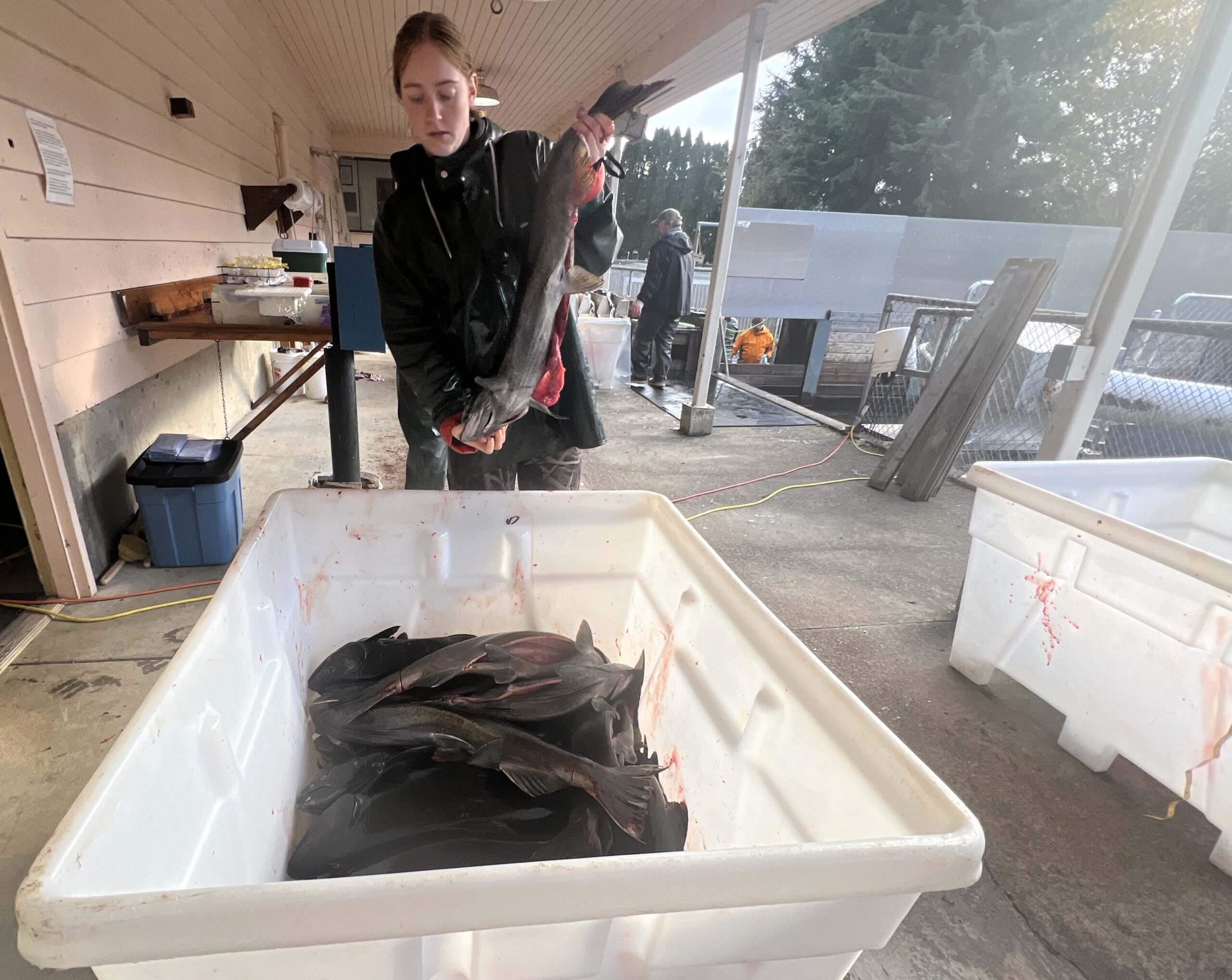
Hatchery struggles
A year ago the OFDW warned it was considering closing the 50-year-old hatchery. In September it made the closure official.
The financially-strapped agency targeted the Otis hatchery for closure because it is one of the most expensive that it owns or operates and one of the most affected by a persistent increase in water temperatures.

“Closing a hatchery is a very difficult decision, and it’s also very rare,” ODFW deputy director Shaun Clements said in a news release announcing the closure. “In the past three decades or more, ODFW has closed only one hatchery, and that was because of ongoing disease issues.”
The Salmon River Hatchery sits on 23 acres seven miles northeast of Lincoln City. It has houses for three employees, a large office building, six holding and rearing ponds, raceways where fish live before their release, and a separate building where eggs are grown into tiny fish.
Opened in 1975, the hatchery has a number of problems – high electricity costs to pump water up from the river to rearing areas, high water temperatures in the summer that cause diseases, and aging equipment.
An Oregon hatchery vulnerability and resiliency study completed last year identified it as one of the state’s more vulnerable hatcheries.
The hatchery raises 200,000 fall Chinook smolts to release in the Salmon River, 300,000 coho for the lower Columbia, 50,000 summer steelhead for the Siletz River, and 40,000 rainbow trout for coastal and Willamette Valley lakes.
Because fall Chinook will continue to return to the Salmon River for up to five years and the agency has agreements with Canada and the Siletz tribe, it simply can’t lock the hatchery’s gate and walk away. So ODFW staff will return each fall to process salmon and come back in the spring to acclimate and release fall Chinook smolts into the Salmon River.
“We still have an obligation to collect adults … and release fish,” said Brent Hinners, who oversees 11 ODFW hatcheries in northwest Oregon and who also helped last week.
The Chinook eggs and male salmon milt collected the past two Wednesdays are going to ODFW’s Trask River hatchery to be fertilized and incubate. They’ll then move to the agency’s Cedar Creek hatchery in Hebo to be raised into smolts. The Hebo hatchery will also rear the Salmon River Hatchery’s 50,000 summer steelhead it has been releasing into the Siletz River.
“We have plenty of (egg) stacks and room at our hatchery,” Fenwick, the Track hatchery’s manager, said Wednesday as he busily collected eggs and milt.
Parts of the hatchery property will remain open to the public, including access for fishermen.
Jacob Reddecopp of Lincoln City, a longtime volunteer who grew up next door to the hatchery, will be the hatchery’s host to keep watch over the property.
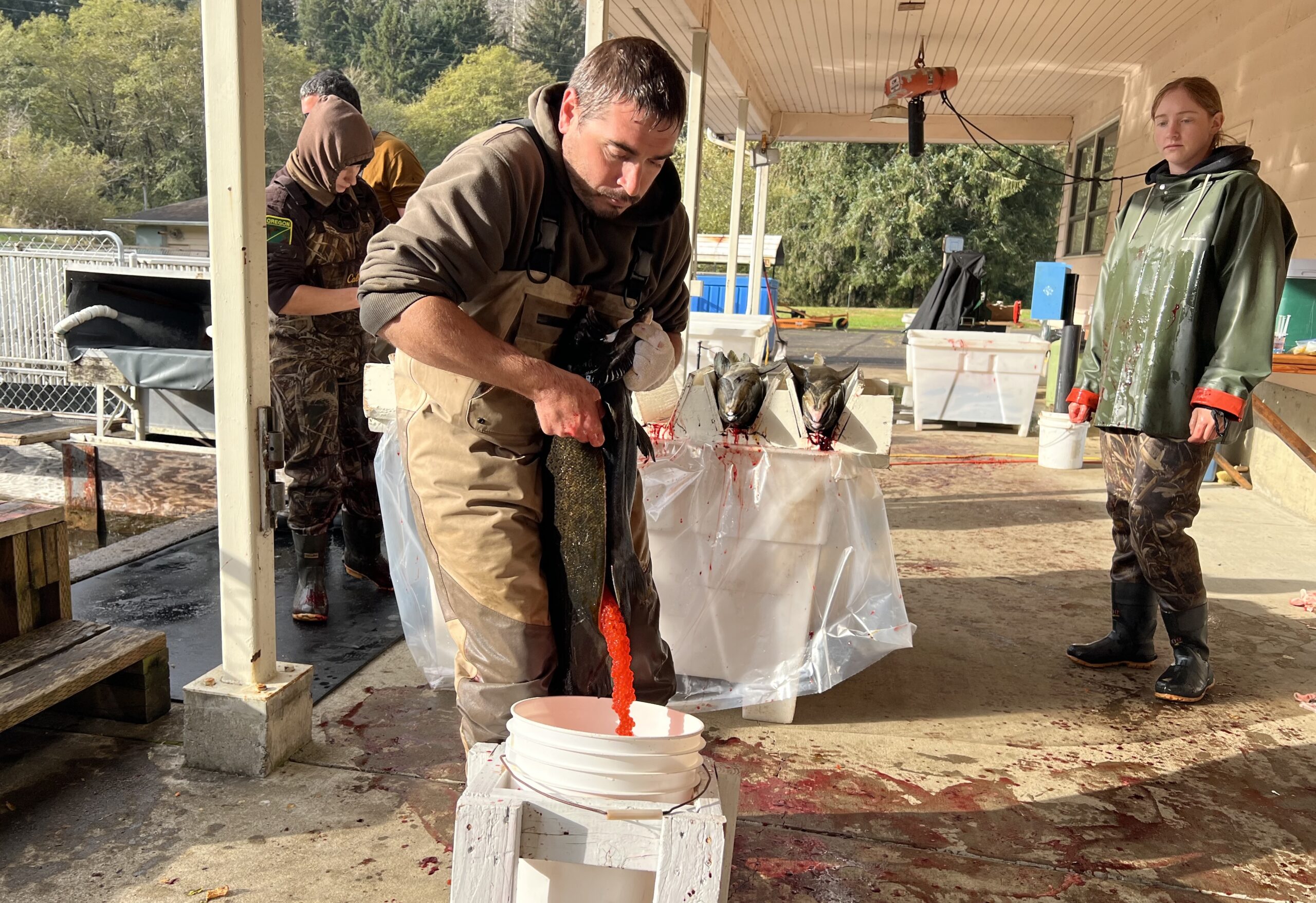
The last roundup
The harvesting process the past two Wednesdays involved moving salmon from the traps that attract the fish heading upriver. They are sorted into female and male, then of wild and hatchery origin.
As they wrestle with the salmon, Clayton and the ODFW crew keep meticulous records of what they do.
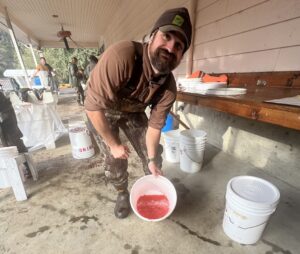
There were 2,468 salmon collected in hatchery’s trap – 667 of those identified as wild and most released. There were 509 coho salmon which were put back into the river.
More than 1,400 salmon collected in early October when they were in better shape went to food banks and gleaner organizations as far away as the Willamette Valley. The Central Coast Food Web in Newport was also a big recipient this year, Wood said.
Salmon in too poor of condition for food banks and killed the past two weeks were put into totes and their carcasses will be placed along coastal stream beds to help mimic the natural cycle of dead and decaying fish.
To raise the 200,000 Chinook smolts it releases each spring, the hatchery needs to harvest just 170 females for their eggs. Of those, 27 percent were wild fish, Wood said.
The females are taken first, slit open and eggs poured into buckets that are put on ice in the back of Fenwick’s truck. By the end of the day they are at the Trask River Hatchery 45 minutes to the north.
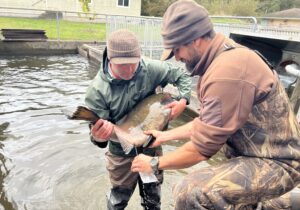
Male Chinook are grabbed, and bellies squeezed to squirt milt into a small plastic envelope that Fenwick marks as wild or hatchery, date and place. Wild male salmon are slid into the pipe leading back to the river; hatchery males are killed for the streambank enhancement program.
The milt is so concentrated, Fenwick needs only to collect a small amount in each envelope to fertilize the thousands of female eggs.
An ODFW pathologist from Corvallis watches over the whole process, taking samples from 60 fish to test for disease. If a problem is detected later, the batch of eggs from that salmon is destroyed.
“Decades of testing has really reduced the disease problems in our juveniles,” says pathologist Melissa White.
But once Wood departs Friday, it will be up to Reddecopp, the host volunteer, to keep track of the hatchery’s public areas.
“I grew up next door,” Reddecopp says, pointing to a house just to the east. “The first time I was in this pond I was 10 years old. I love it here – I want to take care of this place.”
- Quinton Smith is the editor of Lincoln Chronicle and can be reached at YachatsNews@gmail.com





